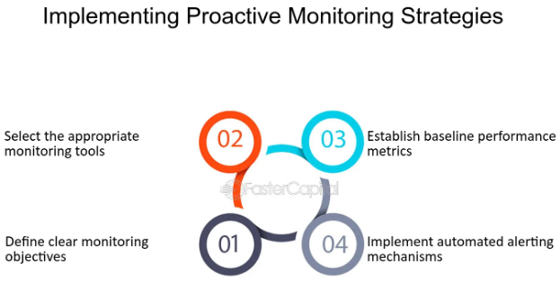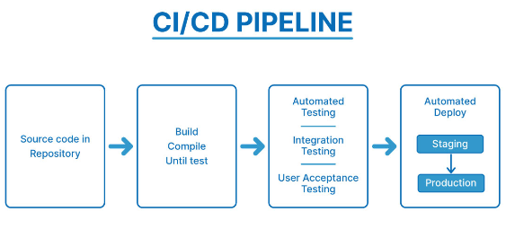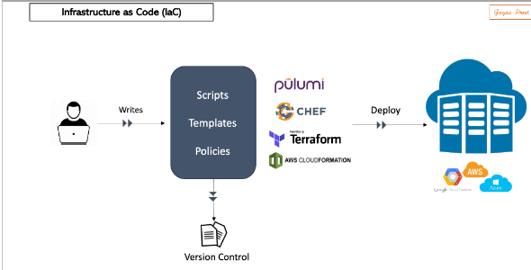DevOps and Business Resiliency: Building Robust Systems to Navigate Operational Disruptions
Business conditions are continuously changing with the current technological development placing firms in competition without warning of imminent operational challenges such as cyber threats and disruptions. One critical strategy that has emerged to address these challenges is business resiliency, which can be defined as the ability of a business to recover from different adversities and continue with its operations in a quick span. Business resiliency goes a step further by allowing alignment to changing, current market conditions, and a strategic approach towards diverse product development.
One facet that is gaining significance and positively impacting business concerns is business resiliency. An organization’s business resiliency is its capability to endure a period of shocks or interruptions and even more effectively, reorganize itself in the new conditions to provide services that are of some importance. This does not only focus on planning countermeasures to disasters but encompasses the everyday management of a business or organization to its improvement in cases of adversity resulting from natural disasters, cyber issues, or any organizational issues.
Read More: Fortifying Media Platforms: Tackling DDOS Attacks and Security Threats with Proven Solutions
However, despite aggressive decisions of separate development teams, developmental operational security management best practices DevOps is such a methodology. There is a need to augment this DevOps culture into the processes to enhance business resiliency.
- Continuous Monitoring and Proactive Issue Resolution: As with other domains in the field of IT, the DevOps principle encourages the regular observation of applications and infrastructure. With monitoring solutions like Prometheus, Grafana, ELK stack, etc. teams can track down how well the system in question functions in real-time. This places enterprises in a better position where potential bottlenecks can be identified and tended to before it later becomes a crisis.
- Automated Testing and Deployment: The most central concept in DevOps is automation. Using this, the teams can easily test the new code and make the required changes in recordings. This eliminates the human error element that might lead to disrupting the normal operation of the entire building any time new features or repairs are added. Additionally, automated rollback features, which enable the system to revert to a stable version may be incorporated in the system to be used in case the deployment targets are not met.
- Scalability and Flexibility: Because it is a core principle of a resilient DevOps culture, applications are also made to be scalable. This means that when peak times for the demand and supply of the systems pour in and resources are becoming insufficient, to preserve performance all the available resources will in one way or be scaled up. Since resources can be scaled up during high demand, there will always be a low-demand period. The capability to scale down always helps in cutting costs without affecting the availability of the services on offer.
- Disaster Recovery and High Availability: The principle of DevOps encourages the adoption of infrastructure as code (IaC) by the teams which enables them to version as well as replicate infrastructure configurations. Well, should there be a likely disaster at business, businesses would deploy similar environments elsewhere as fast as the storm is over. Integrating failure management such as active-active and active-passive systems with DevOps, helps to maximize the accessibility of primary systems.
- Culture of Collaboration and Continuous Improvement:
In this case, the DevOps approach enables close collaboration between the development operations, and security challenges that come with the development process. As a result, people can comprehend the goals of the company, as well as the need for resiliency in an aligned manner. For instance, at the end of an incident and or a disruption, it is good to practice as a team to do a review, which is referred to as post-incident review practices that actually help improve any changes that further dampen such incidents.
Read More: Are Your Requirements Good Enough?
Use Case: E-Commerce Platform – Enhancing Business Resiliency through DevOps
Let’s use an e-commerce company to demonstrate how the implementation of DevOps helps any business presence and its performance.
Scenario: The firm has an online platform for trading where touchless transactions to several million are being done every day. The presence of the system in the market is what ascertains the generation of profit and absence may result in great losses and angry customers. During the Christmas sales season, there is traffic on the website leading to increased pressure on the infrastructure.
Challenge: This company earlier experienced wastage of time whereby they handled events when there was too much traffic and were not interested in unnecessary downtimes. The infrastructure would hit the ceiling causing the responsiveness to the system to slow down or in some cases complete outages. Yes, it translated to a loss of sales, but it also translated into a loss of customer trust and even the brand was affected.
How DevOps Brought Resiliency to Their Business
Their Business Operationalization and Integration of Changes without Directing Aggression Towards Systems Children are enabled to look after clipped trees because the trees are removed from the forest. The organization CDC Deploys a Construct stated Professional Connections Peace Corps Youth Manager.
- Proactive Monitoring and Automation: To prevent future downtime problems, the company launched a continuous monitoring program based on tools such as Prometheus, and Grafana, which enabled monitoring the traffic and resources in real-time. Like every other country in Australia, just when they let the traffic go, it cannot simply stand. By utilizing a very capable infrastructure, it was originally built for a very consumer-friendly feature.

image for monitoring
- CI/CD Pipelines and Quick Response Time: However, with the adoption of DevOps, the company wisely chose to integrate CI/CD pipelines into its processes in order to guarantee that more or less, every code modification or new functionality would be implemented with minimum disturbance. Thanks to automated testing, bugs were known early even before live deployment which minimized the chances of going live with the errors. This was accompanied by automated rollbacks, which in case of a failure, brought the platform back to a relatively stable state in a reasonable time.

CI/CD
- Disaster Recovery and Failover: For scenarios that are expected to be more disruptive than others such as loss of data center or providers or complete cloud outages, the organization chose to work with Infrastructure as Code (IaC). This also made it possible for them to be able to make their structures in multiple regions. In the event of one region going down, the region experiencing the compromise was completely shifted to a backup region by virtue of the operating active-active failover architecture that ensured almost zero outages.

IAC
- Collaboration and Continuous Improvement: Within this timeline to date, the dev ops team has carried out post-incident reviews after every holiday sales event to know what had gone right and what had to be worked on after every holiday sale. Completion of this cycle over and over has enabled them to make their systems better with time meaning that they have been better positioned to manage future sells boom and unanticipated situations more effectively.
The result
Through this integration of DevOps, the company was able to efficiently minimize any downtime associated with busy timeframes. The company did not suffer any losses even with a traffic increase of 200% during the holiday saleable season leading to increased sales and customer satisfaction. The use of automation and real-time monitoring and disaster recovery strategies enabled them to act quickly on any arising issues, thus maintaining their customer’s trust.
Conclusion
In the contemporary world no one can ignore the likelihood of interruptions that might arise at any given time therefore even the most flexible business resiliency is not a good to have but compulsory. This goal is achievable thanks to such approaches as DevOps that emphasize automation, continuous enhancement, and cooperation making it possible to create robust systems that can mitigate shocks and bounce back easily from any calamities. Incorporating a DevOps approach to the business architecture would help keep the business environment flexible and proactive despite the fact that all operations, as well as the business environment, would be full of challenges.



